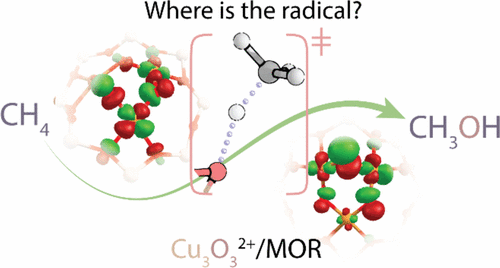Авторы: Konstantinos D. Vogiatzis, Guanna Li, Emiel J. M. Hensen, Laura Gagliardi,

Abstract
Identifying Cu-exchanged zeolites able to activate C–H bonds and selectively convert methane to methanol is a challenge in the field of biomimetic heterogeneous catalysis. Recent experiments point to the importance of trinuclear [Cu3(μ-O)3]2+ complexes inside the micropores of mordenite (MOR) zeolite for selective oxo-functionalization of methane. The electronic structures of these species, namely, the oxidation state of Cu ions and the reactive character of the oxygen centers, are not yet fully understood. In this study, we performed a detailed analysis of the electronic structure of the [Cu3(μ-O)3]2+ site using multiconfigurational wave-function-based methods and density functional theory. The calculations reveal that all Cu sites in the cluster are predominantly present in the Cu(II) formal oxidation state with a minor contribution from Cu(III), whereas two out of three oxygen anions possess a radical character. These electronic properties, along with the high accessibility of the out-of-plane oxygen center, make this oxygen the preferred site for the homolytic C–H activation of methane by [Cu3(μ-O)3]2+. These new insights aid in the construction of a theoretical framework for the design of novel catalysts for oxyfunctionalization of natural gas and suggest further spectroscopic examination.
DOI: 10.1021/acs.jpcc.7b08714
Read Full Here: